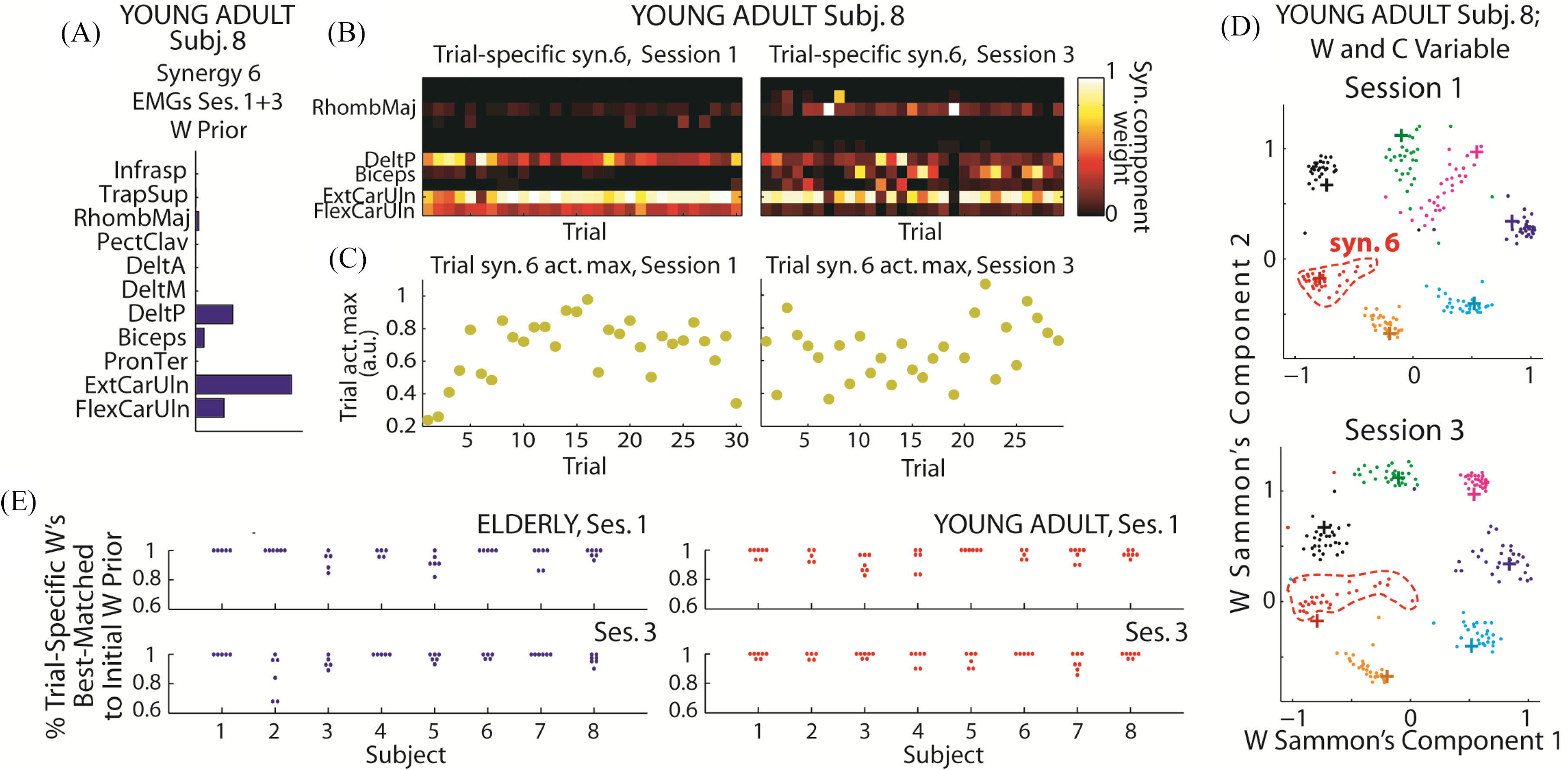Figure 5.

Modeling motor variability with trial-variable W and C. A, The initial guess for W in the NMF corresponds to prior information known about W; thus, the global estimate of W (extracted from the combined EMGs of sessions 1 and 3) could be supplied to NMF as “W prior” for extracting trial-specific W's. B, The trial-specific W's from the prior shown in A. Each column corresponds to the W of a trial. C, The Cmax resulting from the extraction of trial-specific W's, for the same trials shown in B. Note that Cmax-variability remained even when W was allowed to be trial-variable. D, We visualized the trial-specific W's (.) and their W priors (+) by projecting all W vectors to 2-D space by Sammon mapping. Each color denotes an individual synergy. Note that the W priors used in both sessions were the same. Synergy 6 here (red) corresponds to the synergy shown in A, and B. Note the increase of variance of synergy 6. E, To validate the consistency of the trial-specific W's resulting from each W prior, we matched every set of trial-specific W's with the set of W priors by maximum scalar product, and for each prior, calculated the percentage of trials with its trial-specific W's matched back to itself. Each data point on the graph denotes the percentage of a synergy. Across subjects, the percentages were consistently high (∼90–100%).
